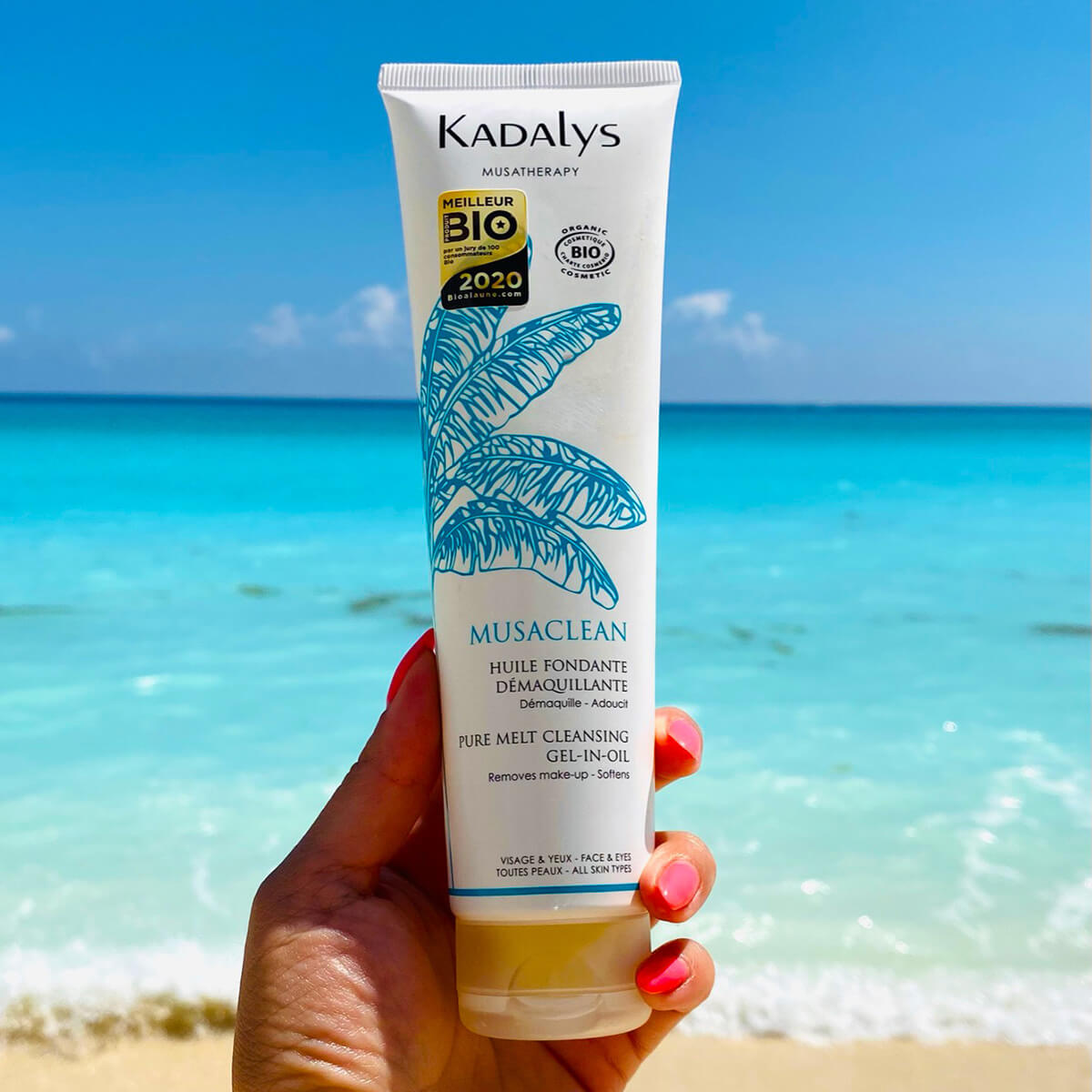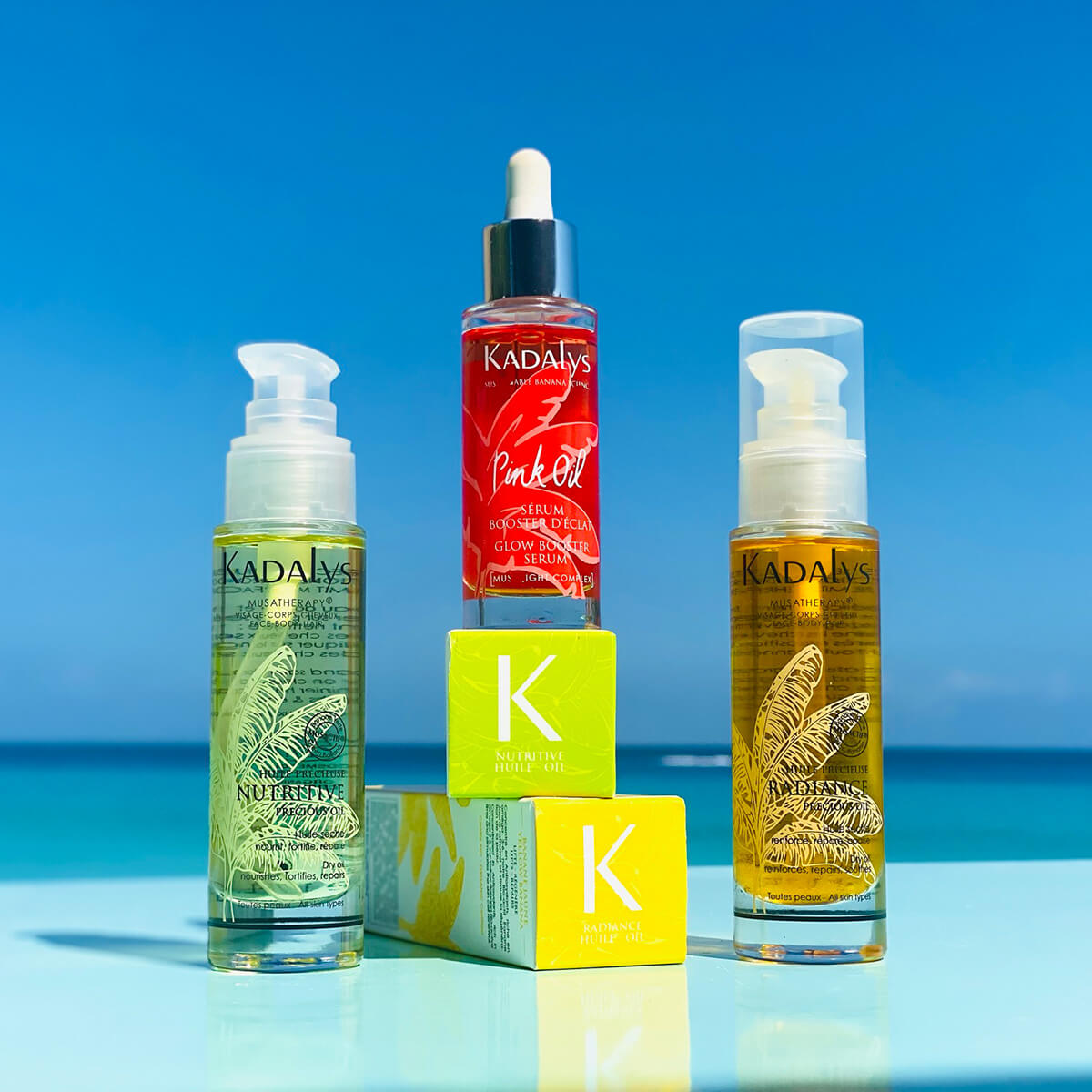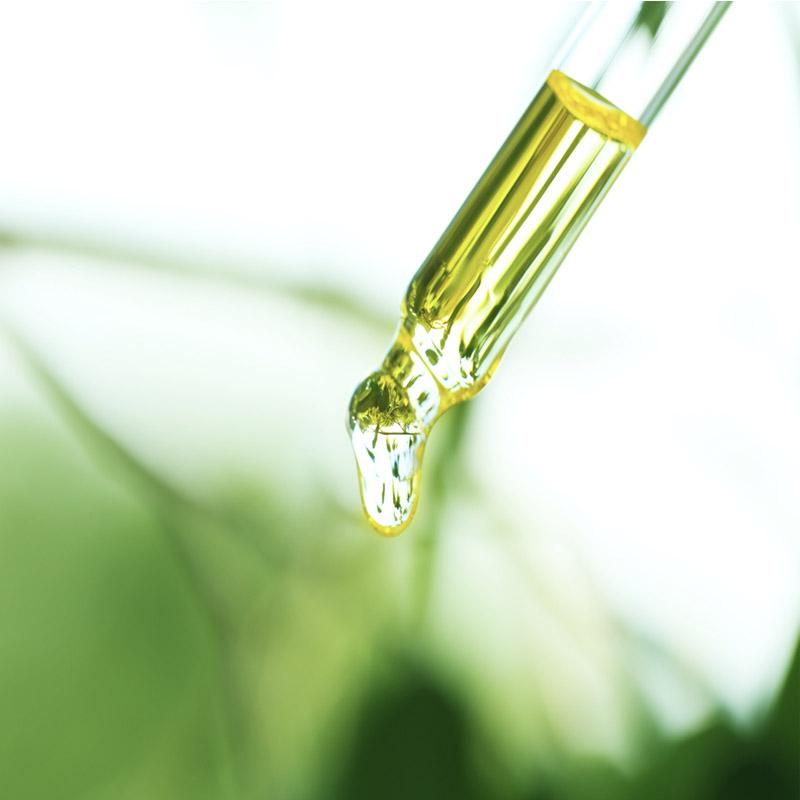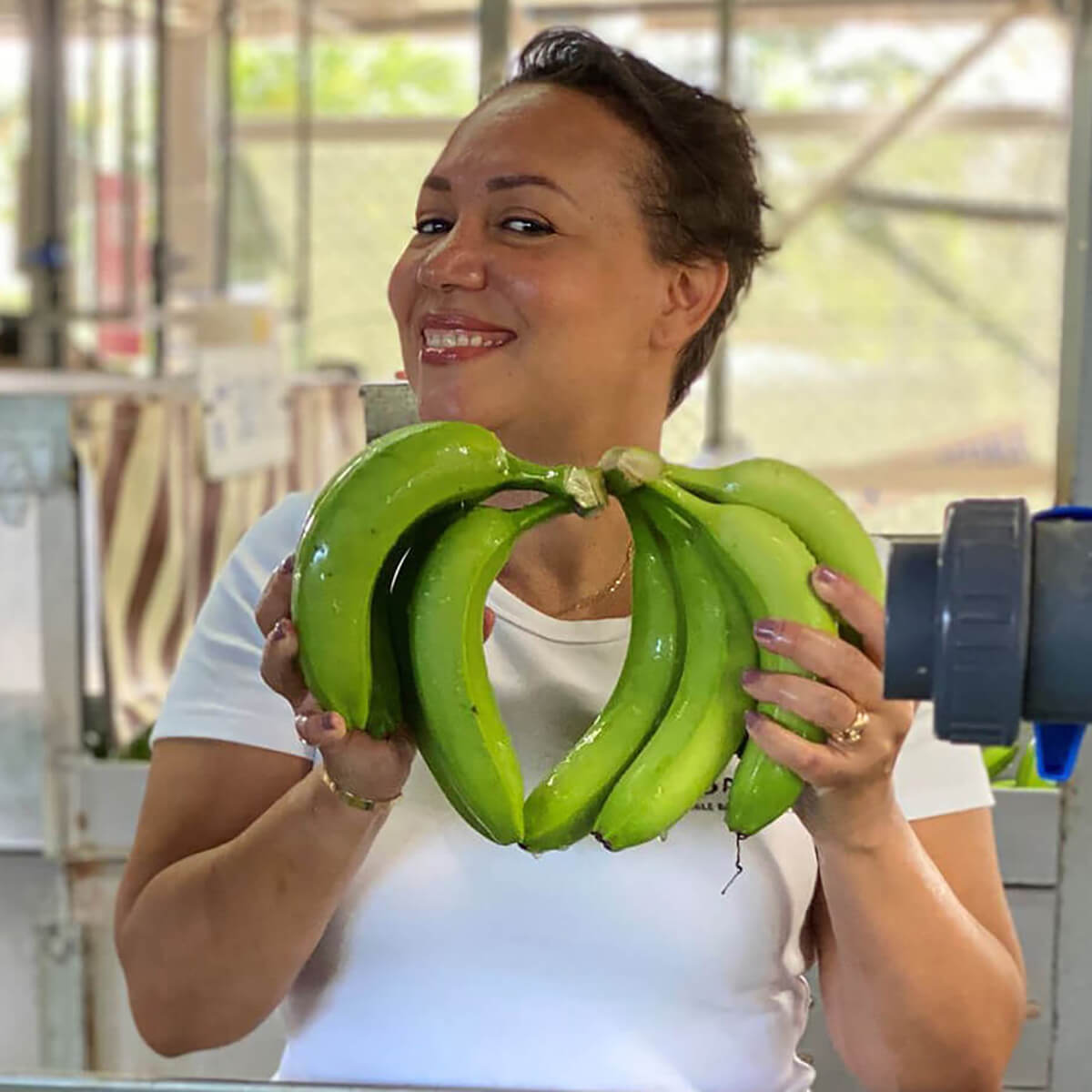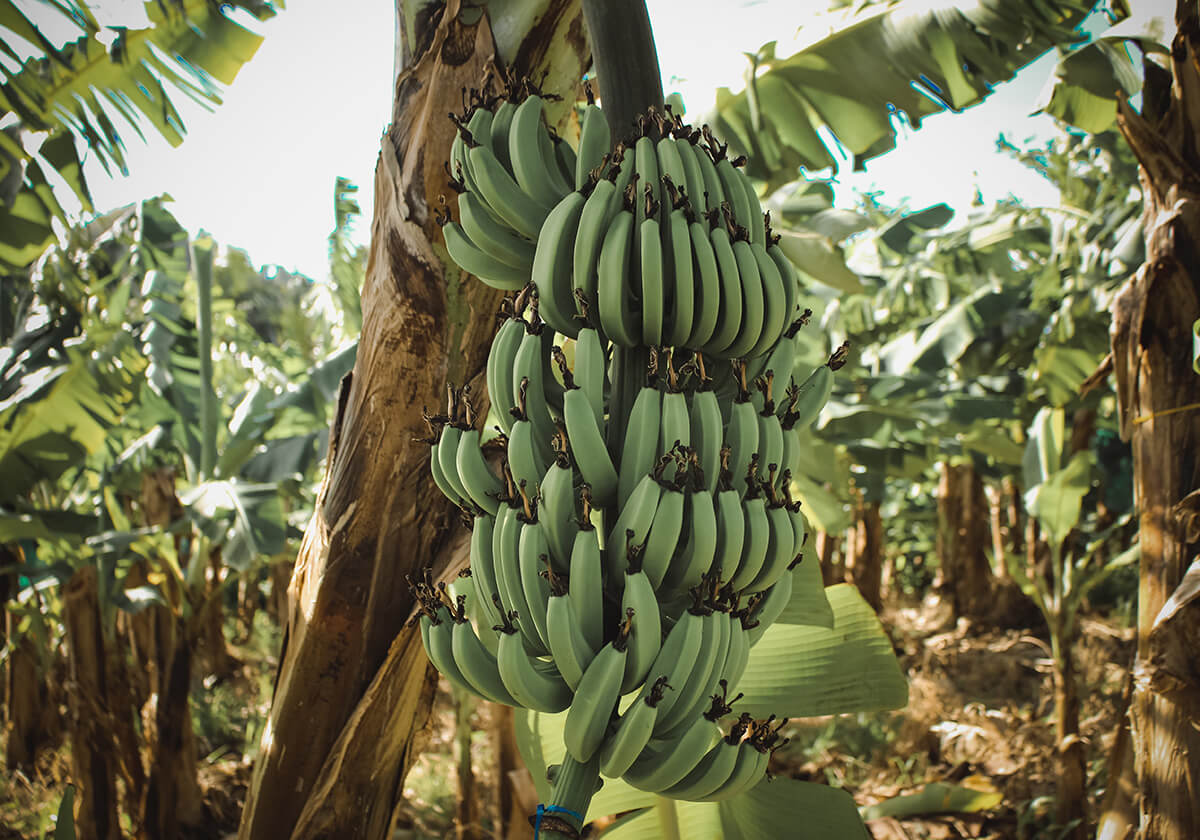
Peeling Back the History of Bananas
Bananas have played an important role in trade and culture globally for a long time.
From Cuba to India, people have long loved bananas for their pretty colors and yummy taste.
Today, we'll dive into the a-peeling story and history of bananas.
Banana Varietals
Here's a fun fact for your next cocktail party: there are a bunch of banana varieties in the world –– more than 1000 different types in fact.
And each type has a unique taste and texture.
For example, the Cavendish banana is creamy and sweet while the plantain is savory and starchy.
And while most of us eat our bananas, they can be used for many, different therapeutic purposes, such as wound healing and *ahem* skin care.
The banana tree is often called a "plant with a thousand uses" because of the number and wide range of health benefits it can convey.
But, did you know that one type of banana almost disappeared forever?
It's called the Gros Michel (pronounced "Grow Michelle"), and its story changed our banana diet forever.

Introducing the Gros Michel
The Gros Michel Banana used to be the world's top banana.
Even here in the U.S., the Gros Michel was the most common banana from the 1870s until the mid-1950s.
Its thick skin and ability to stay fresh during shipping made it very popular in the early 20th century.
This means that generations of people in America thought that it was the best kind of fruit.
The Decline of the Gros Michel
Sadly, we cannot find the Gros Michel bananas in the U.S. market now.
This is a pity because Gros Michel was considered one of the best-tasting bananas ever.
What did the Gros Michel taste like?
People described its taste as sweet, rich, creamy, and tangy.
It was often used as a dessert–– did you know the famous banana split was made using the Gros Michel banana? So many cocktail party fun facts here today!
Here's another: The artificial banana flavoring used in some foods and candies is modeled after the Gros Michel.
Most people thought the Gros Michel was sweeter and creamier than the kind of banana we have in the U.S. today.
So what happened? Why did the Gros Michel banana go away?

The Rise of Panama Disease
The reason is Panama disease, also called Fusarium wilt.
Fusarium wilt is a disease caused by a fungus that can spread through soil.
The first sign of infection is that the banana tree starts to wilt. Then its leaves turn yellow and die.
Panama disease first started hurting Gros Michel bananas in the 1890s in Costa Rica and Panama.
But like a bad TikTok trend, Panama disease spread quickly. It wasn't long before it destroyed most of the crops.
By the 1950s, the fate of the Gros Michel banana was sealed.
Most of the banana plantations in Central America were infected by the disease. So, farmers had to look for an alternative type of banana.
Searching for a new banana
They found their answer in the Cavendish Banana.
English gardener (Joseph Paxton) first cultivated this strain based on bananas from Mauritius.
He named it after his employer, William Cavendish, the 6th Duke of Devonshire.
Paxton even won a medal for the Cavendish banana at the Royal Horticultural Society in 1835.
Once farmers discovered they could grow Cavendish bananas successfully in the infected soil, they made the switch.
Although it's a good banana it doesn't quite match up to the Gros Michel in taste.
That's why companies in the 1960s worried consumers wouldn't accept the Cavendish as a banana replacement.
They needn't have worried.

The rise of the Cavendish
In the 19th century––when Susan B. Anthony was out helping women get the vote––the Cavendish Banana was considered to be an exotic delicacy.
Fast forward to today, the Cavendish Banan is the most commonly consumed banana in the world. It is the only type widely sold in the U.S.
On average, Americans eat a hundred of them every year. They are eaten fresh, but also in many different ways, such as chilled, fried, mashed, or baked into banana bread.
How bananas are grown
Bananas are a popular fruit, but not many people know the interesting story behind them.
The process of artificial propagation has changed how bananas are grown.
By making identical copies of banana plants, growers can manage the growth of the fruit.
This also helps them produce a more consistent and better-tasting product.
This method has revolutionized the banana industry. One way it did so was that it allowed farmers to grow bananas on a much larger scale than before.
However, this also creates new risks.
Will history repeat itself?
While the Cavendish banana has mostly been safe for the past 50 years, it too is now threatened by a different strain of Panama disease.
Like the Gros Michel banana, the Cavendish has low genetic diversity. This is because bananas are usually grown using the same seed or cloning -- as noted above.
This also means that they are all at risk if a disease targets one banana.
Unfortunately, one strain of Fusarium wilt has already affected the Cavendish for about three decades. Known as Tropical Race 4 (TR4), this disease was discovered in the Americas in 2019.
There is currently no known effective fungicide against TR4, so there is concern that the Cavendish may suffer the same fate as the Gros Michel.
This would be a big problem since lots of people around the world rely on it as food.
It's surprising that another banana type is in danger, and shows how diseases can affect our food supply.
The future of bananas
The future of bananas in farming is full of potential for growth, but not guaranteed.
Climate change, other environmental factors, and the risk of disease. These are issues today's banana farmers must deal with –– if they want to have a successful tomorrow.
We can all play a part in shaping the future of bananas by supporting sustainable farming methods that protect the planet and the plants.
That's why we work closely with our planting partners, and include them as shareholders in Kadalys.
We help support their efforts to preserve natural resources and produce the most virtuous bananas.
Thanks to their focus on sustainability, the banana farms of Guadeloupe and Martinique are now a refuge for many animal species.
Today, there are more than 214 species of insects and twice as many species of birds in the French West Indies as there were 10 years ago. This biodiversity helps protect the crops.
These efforts require investment and work, but we are committed to a healthy future for bananas.
Conclusion
With so many varieties, bananas have a rich and interesting history.
We can appreciate today's bananas while continuing to improve the way they are grown.
And by supporting sustainable and responsible farming, we can ensure that bananas continue to thrive.
Whether you eat them in smoothies or use them on your skin, bananas have strong health benefits.
And they make a great daiquiri, which you might have at your next cocktail party where you can share all these fun banana facts.


